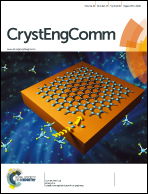Effect of calcination temperature on nanoparticle morphology and its consequence on optical properties of Nd:Y2O3 transparent ceramics
Abstract
The Nd(2%) doped Y2O3 nano powders were synthesized by a precipitation method. The precipitate was calcined at various temperatures to obtain nano powders having different particle size distribution and morphology. The changes in morphology and the size distribution were studied by scanning electron microscopy and a dynamic light scattering method. The pellets fabricated using these nano powders were sintered in vacuum at 1750 °C. The transparency of the pellets was compared at various calcination temperatures of precipitate. The transmittance of pellets increased with increasing calcination temperature up to 900 °C and further calcination at higher temperature reduced the transmittance of Nd:Y2O3 ceramics. It was observed that the transmittance is greatly dependent on the morphology and particle size distribution. Strong absorption bands were observed at 600 and 800 nm for Nd:Y2O3 transparent ceramic. The Judd–Ofelt parameters were calculated from the absorption spectrum and a small Ω2 value signifies a less asymmetrical environment around Nd3+ in the Y2O3 host lattice. The IR (840–1400 nm) emission photoluminescence (PL) spectra confirmed that the PL peak positions do not vary with calcination temperature. Three strong emission bands at 871–957 nm, 1045–1137 nm and 1306–1379 nm were observed corresponding to 4F3/2→4I9/2, 4F3/2→4I11/2 and 4F3/2→4I13/2 transitions of Nd3+ ions respectively.


 Please wait while we load your content...
Please wait while we load your content...